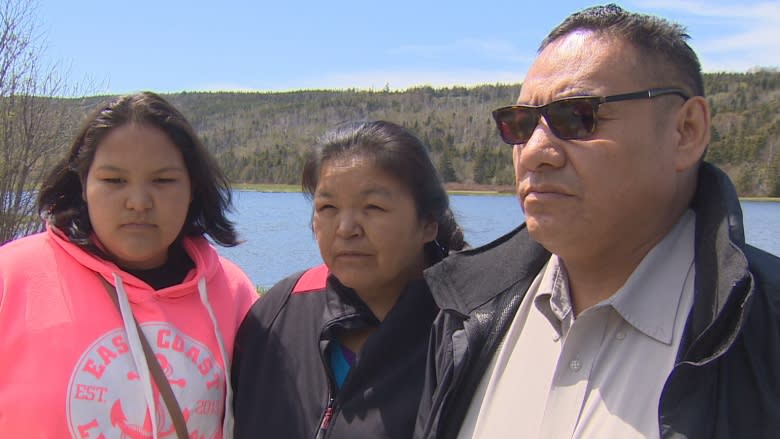Changes to child protection act greeted with cautious optimism
Simeon Tshakapesh has seen the limitations of the province's existing child protection act first hand.
Tshakapesh lost his 16-year-old son, Thunderheart, to suicide last year. Thunderheart had been removed from his home in Natuashish after his parents made a voluntary request to Child, Youth and Family Services, seeking help for their teenaged son's addiction issues.
But Thunderheart struggled with being so far from home after he was sent to rehab centres in Grand Falls-Windsor and Regina, far from his Innu community along Labrador's northern coast.
"I feel like I'm losing my language. I feel so homesick. Mom, please, I just want to be home. I don't like it here, I just want to be home with you guys. I want to live like an Innu boy," Tshakapesh said, reading from a letter his son had sent home.
Thunderheart returned home shortly after turning 16, but he ended his own life not long after. The lasting effects of his time in the child protection system were a factor, his father said.
"He experienced psychological damage done to him, and my boy had a wonderful dream and the system killed that dream for him," Tshakapesh said.
"And now Thunderheart is not going to be able to pursue his dream anymore."
Based on his experiences as a father, as an advocate and as the former deputy grand chief of the Innu Nation, Tshakapesh is encouraged by planned changes to the child protection act, announced by the provincial government on Tuesday.
But it's a cautious optimism.
"I'm hopeful that the new legislation will work for betterment for our youth, and our people, and our elders, and our communities," he said.
"I am very thankful, but then again, still a lot of work needs to be done."
Changes aimed at Indigenous families
On Tuesday the province announced Bill 14, An Act Respecting Children, Youth and Families, which would replace the existing Children and Youth Care and Protection Act, which came into effect in 2011.
The act places significant focus on the needs of Indigenous children and youth.
Changes include increased information sharing with Indigenous governments and organizations, a specific focus on keeping Indigenous children with their families or in their own communities when possible, and a requirement that cultural connection plans be filed with the court when an Indigenous child is removed from their community.
Bill 14 also includes a clause that allows for Indigenous governments the option to take over child protection responsibilities.
The cultural connectivity plans are key for children who do end up leaving their communities, said Jackie Lake Kavanagh, Newfoundland and Labrador's child and youth advocate.
"For a child who's taken into care and removed from their home and their community, I think that's really, really important."
Similar plans have been used before with mixed levels of success, Lake Kavanagh said, so it's important to make sure they are done in a way that will be effective.
"If it's now enshrined in the legislation, it's a requirement. We will be looking to see what those plans look like."
The possibility of Indigenous governments taking over child protection if they so choose is a positive change, Lake Kavanagh said, but it's important to look at what has and hasn't worked in other jurisdictions and ensure that the government does not simply download services.
"It is a really good idea, but we have to make sure that the supports enable that to be successful."
Extending care for older youth
Other changes aimed at older youth in protective care are also positive developments, Lake Kavanagh said, pointing to the extension of youth services to age 21 and ensuring youth cannot voluntarily sign out of care until age 18 as important changes in the bill.
"I think that's really significant for vulnerable youth," she said. "They will have two more years now where they will have more supports, more structure in their lives, and I think that will probably be important."
As well, the addition of the obligation to report when there is reason to believe a youth is at risk is important, and offers an opportunity for better education about what that obligation entails, she said.
"With this new legislation now there's a real opportunity for the department to do a really good piece of public awareness work about the requirement and the duty to report."



